- Home
- Scott Turow
Identical Page 8
Identical Read online
Page 8
“Did you understand anything her father was yelling?” she asked once she’d closed her door.
“He didn’t care for getting corrected,” Tim said. “She told him he didn’t see Cass on television, it was Paul, and that got under his skin. I didn’t understand every word, but he was pretty much yelling that he baptized those boys and they served on his altar. There might not have been ten people in the parish could tell them apart on sight, not even their aunts and uncles, but he could, and why was she always telling him he was wrong about stuff. She was trying to convince him he was crazy so she could get all his money.”
Evon groaned. “Poor Georgia.” She bounced her Beemer over the snow ruts and proceeded slowly in the clear channels carved in the street.
“Tough hand she got dealt. That husband of hers, she had to divorce him while he was in prison. Then he got out and begged her to take him back, and not two months later, Jimmy sold two hundred bottles of crack to an undercover cop. He’s still inside, too, if I recollect right. But you could see how she makes her own trouble, too.”
“How’s that?”
“I bet if you go look, Cass was on TV. Don’t you think with all of this fur flying, that one of the channels put on some of their old file footage of Cass being hauled off to prison?”
“Probably so,” Evon allowed. “She sure didn’t like me.”
“Outsider. Old-timers around here are just like that. You’re nobody until they say you are. Sorry to take over like that with her.”
“You were great, Tim.” She meant it. “What did you make of that stuff about Cass being left-handed?”
“Set me back. Sure you could see. I just went through that whole damn file cabinet and no one said a word about that. He wore that ring, though, the class ring.”
“So did Paul, apparently.”
“I heard that,” he said. “You’d have thought Sandy Stern would have mentioned which hand Cass used, wouldn’t you? Wasn’t any secret we were looking for a right-handed assailant.”
“Maybe his client didn’t want him to say anything that might point toward his brother. Paul has to have the same blood type, right?”
Tim made a sound as he nodded.
“And why is Paul saying Cass is innocent?” Evon asked. “After he pled? What does Paul know that makes him so certain?”
A guy across the street was returning from work with an old-fashioned lunch pail, but it was Tim who had her attention, gazing down the avenue and plainly unsettled. The shoes, the ring, the blood, fighting with Dita, being right-handed and declaring his brother innocent—there was starting to be a lot pointing at Paul.
“She didn’t see any cuts on him, right?” said Tim.
“So she says now. But no one saw Cass’s cut either. The only thing that threw me was her remembering that Paul was going to meet Cass at Overlook. You think that’s legit or just Georgia being contrary?”
“She sounded pretty sure.”
“You know, they both could have gone from there to see Dita.”
“It’s only Cass’s fingerprints in that room.”
“But you had to have plenty of unidentified lifts, right?”
“Of course.”
“And you never did a comparison for Paul, did you?”
“Hmm,” said Tim, by way of an answer. His mouth squirmed around while he pondered. She pulled up in front of his house. “Course, he could give some excuse about being there to visit. What would clinch it these days would be to do DNA on the blood in Dita’s room. But that wouldn’t help, since they’re identical twins.”
“Well, you said their fingerprints aren’t the same. Maybe the DNA isn’t either.”
Tim doubted that. There had been a rape case in Indiana no more than five years ago, where the state hadn’t been able to convict the defendant because he had an identical twin brother. There was DNA collected from the victim, but no way to tell which man it belonged to. Evon remembered the case when he mentioned it.
“That science is moving like lightning,” Evon said. “I dealt a little with DNA in the Bureau, and now when I read about a case in the papers, I can’t even understand what they’re talking about. So maybe there’s a way to tell twins apart these days.”
They talked for a second about what would happen next. She’d find a DNA expert and then would have to consult with Hal’s lawyers. Tooley had brought in a big firm after Paul filed suit, although Mel was still pretty much in charge. All of the lawyers would raise hell that they couldn’t talk to Georgia, but Hal would take Evon’s side when he saw today’s recording.
“I’ll call you,” she said. Tim nodded, but he was looking a little beaten up. He clearly didn’t like thinking he’d missed the boat, as he’d said at his house. And that stuff about his daughter probably hadn’t helped either. Evon had never thought about children until a couple of years ago, when she realized how quickly the world was changing. Now that she was fifty the moment had likely passed her by. But given how badly she occasionally missed the baby she’d never had, she couldn’t imagine the pain of losing a child you’d held in your arms.
“I know it was a long time ago,” she said, “but I’m sorry about Kate, Tim. I’m sure it’s still hard for you.”
He nodded again in the same labored way.
“Something like that,” said Tim. “It just doesn’t go way. It’s more than thirty-five years. Katy could be dead of God knows what else by now, or had to bury children of her own. You accept that it happened. But you know that life burned this hole in your heart and it’s not going to heal.” She could feel his composure starting to wither as he struggled out of the car, casting his bad leg around his body as he walked off.
By the time he got into the house, the full weight of his life was on Tim. He sat down in the living room, still in his overcoat, slumped forward with his big hands between his knees, lacking the will to move any further. He didn’t succumb to this very often. Everybody had things to be sad about, especially when you got to this age and carried with you the thought, only barely submerged, that the end wasn’t far off. But there had been times throughout his life when a sadness thick as glue had immobilized him. As a younger man, he would drink at these moments. Older, he’d just learned to talk himself through it.
When he was born, Tim’s family, the five of them, had lived in a one-bedroom third-story walk-up, about a mile from here. He was the baby, the unexpected child who came eight years after his brother, ten years after his sister. His mother was a frail woman whose nose was always running and who seemed beleaguered by her life. It was his father who held it all together. He was a big man, bigger even than Tim grew to become, who roared rather than spoke, and generally extolled life, and certainly his children and his wife. Whenever he arrived home, Tim was overjoyed.
When Tim was six, his father, a yardman on the Chicago and North Western, fell between two cars and was killed, sliced in half, according to accounts Tim heard years later. His mother was simply beyond herself, shattered by her husband’s death. Tim’s sister, sixteen then, left home, and his brother was parceled out to his mother’s sister. But at the age of six, a bit rambunctious, and morose with the loss of his father, Tim was too much for any relative to take on and his mother deposited him with a brown lacquered valise at St. Mary’s Home, telling him she would be back for him soon. She never came. He cried himself to sleep for over a year.
Most of his buddies on the Force who had Catholic educations tended to down-talk the nuns, telling stories about how the sisters rapped their knuckles with rulers, making out most of them as these dried-up, sexually deprived bitches who’d found their marriage to God as unhappy as everybody else’s. But the sisters and brothers who cared for Tim at St. Mary’s—and him not even born Catholic—they had saved his life. They were kind, and full of faith in the goodness and potential of every child. Even as a kid, missing his mother and his father every day, there was a piece of him that knew he was better off there. He started playing the trombone. Sister Aloysius g
ave it to him and he got good. “That horn, son, will get you out of here.” It got him a place in the Marine Corps Band, and that in turn got him a place at City College.
He was twenty-four, playing nights in jazz clubs, when his mother walked by him on the street, her arms full of brown grocery bags. He said nothing, but trailed her all the way to a tenement. She went through the door before he could get inside, but he stood on the street and watched the lights go on in a fourth-floor window. When another tenant emerged, he went in.
His mother stood there on the threshold staring at him. Then her nose turned red, and she lifted her apron to her eyes as she cried.
‘Oh, Tim,’ she said. ‘Tim, I didn’t know what to do.’ He heard a child complain inside the apartment, and a girl about ten reached her mother’s side and stared at him darkly. His mother invited him in. He declined out of sheer confusion, but turned back to ask about his brother and sister. Alice, his sister, was unheard of—Tim was in his forties before he found her—and his brother, like him, had gone into the service. The next time Eddie came to town, he looked Tim up.
‘I tried to tell her we had to go see you,’ Eddie said, ‘and she wouldn’t hear of it.’ Ed, a man his father’s size, began to blubber. ‘I was afraid if I put up a fuss, she wouldn’t see me either.’ It was a terrible truth, but Tim understood. He embraced his brother then, and the two were never out of touch again. Eddie called at least once a week, no matter where he was in the world, and the two fished in the Boundary Waters every summer, a place they’d first gone with their father. In time, their sons and daughters came, too. Ed had been gone six years now, dead of cancer in Laguna Beach.
Maria had invited Tim’s mother and his three step-siblings every year at Christmas and they came, but Tim had no feeling for them. Instead, he regarded himself as blessed to have his wife, his daughters, and Eddie. He had people to love, who, best of all, loved him, too. He didn’t feel it made sense to waste the energy on relationships that would only pull him under some emotional waterfall in which he’d never catch his breath.
He’d had it good in the end. They lost Katy, but there were two more girls, good girls, wonderful girls, both now out in Seattle, who traded off calling him every day. Maria had loved music, too—she was a fine pianist and gave lessons to half the kids at St. D’s. They’d made a home full of music and laughter, where they all loved each other just a little bit more because Katy’s death had taught them how precious their lives were.
When he was young, of course, sleeping in the dorms at St. Mary’s, he would wonder if anyone would ever love him, and if he would love anybody else. He had wanted to be close to someone and wondered what it would feel like. Even when he knew he was in love with Maria, he wasn’t certain he’d gotten it completely right. When she turned sick, three years ago, when he began to realize he would have to live without her, as he had lived before they met, he finally knew for sure that he had done what he wanted to as a little boy at St. Mary’s.
Now, alone and missing her terribly, he was left to wonder if it had been equally good for her. He hadn’t been perfect as a husband, especially at the start when the grief of his childhood sometimes made him a roistering fool. Maria was never one to complain much, but when she did, she talked about how closemouthed he was. He never spoke of his childhood, she said, even though she could feel the mark it had laid on him. Had he given her enough, shown her attention she deserved and craved, or simply been consumed with healing his own wounds? Crumbled in a defeated heap in his living room, he was drilled by a fear that had become familiar. Had she reached the end still longing for more he could have given, but hadn’t?
8.
DNA—January 28, 2008
The short answer,” said Dr. Hassam Yavem in his faint Anglo-Pakistani accent, “to the question you posed on the telephone is yes, in theory, given no boundaries on time and money, it might be possible to distinguish reliably between the DNA of identical twins. But you would basically be trying to thread the eye of a very, very small needle from across a football field.”
Evon and Dr. Yavem, in his long white coat, sat in his office adjacent to his DNA lab. A dapper narrow gent, Yavem had a trim black moustache and a bald head that rose to a point, a bit like a hazelnut. His replies to Evon’s questions were preceded generally by a brief, kindly laugh, which exposed a gold cap on one of his front teeth.
Across from him at his desk, Evon felt like she’d tightened the screws on her brain, trying to track what Yavem was saying. Hal had been in a heat as soon as Evon raised the notion of doing DNA tests on the blood found in Dita’s room. She knew her boss would be frustrated if she couldn’t answer all his questions.
“You can stop me when you are hearing too much,” Yavem said. “One of my colleagues in Alabama is about to publish research this month showing that many identical twins are not completely identical genetically. The variations between them are very slight, but in the tens of thousands of genes there may be isolated differences.”
Yavem was a famous guy, whose work concentrated on comparisons of the genomes of family members, research that had led him to establish the genetic basis of a number of diseases. He was mentioned often as a potential candidate for the Nobel Prize in Medicine. Earlier in his career, he had testified in several celebrated criminal trials. These days he referred most DNA identifications to a commercial concern he’d founded and sold a decade ago, instead applying the bulk of his time to research. The forensic cases he took on personally were few, and it was something of an honor that he had agreed to meet Evon, although Hal’s name had undoubtedly carried considerable weight. The Kronons had made two seven-figure gifts to the U, Hal’s alma mater, over the years.
“We’ve known for some time that the environment outside the womb causes some variation in gene expression, called methylation. That is why some identical twins are not completely identical in appearance, as they age. But methylation does not represent any basic genetic difference.”
Evon repeated what Yavem was saying to herself, in her own terms. Methylation explained why Cass appeared just a bit taller and thicker than Paul, when they were side-by-side at the pardon and parole hearing. But that was a difference only in the way the same genes had responded to the world.
“But,” said Yavem, “there are other minute differences in twins’ genomes that are more pertinent to the question you asked. Those are what we call CNVs, for copy-number variations. These appear as segments of DNA that are missing, occur in multiple copies, or have flipped orientation in the genome.
“A human gene consists of hundreds or thousands of combinations of the chemical building blocks, adenine—A for short—cytosine, C, guanine, G, and thymine, T. One segment of the hemoglobin gene, to pick an example in the blood, is CTGAGG. A copy-number variation is like a typo. So CCTGAGG could be switched to CCTGTGG, with thymine substituted for adenine in the genetic sequence. CNVs probably explain why only one twin gets what we think of as a genetically influenced illness. The example I just gave you, with the A switched to a T in the hemoglobin gene, leads to sickle-cell disease.
“Most CNVs are probably benign, and some may prove positively beneficial. They occur in all individuals, not just in identical twins, probably as part of nature’s great ongoing experiment. My own research suggests that about two-thirds of CNVs occur after conception, as part of fetal cell division.”
“So that’s what might be different between Cass and Paul?” she asked. “These CVNs?”
“CNVs,” said Yavem, smiling patiently. The DNA lab visible beside Yavem’s desk through a wide window was far less dramatic-looking than Evon might have expected, not all that different in appearance from where she’d taken high school chemistry, the same collection of beakers and bottles, microscopes and computers and black counters. There were rows of test tubes in blue plastic racks, capped with white stoppers. It was a small space, undoubtedly so the risks of contamination could be controlled, and the three gowned workers within were pretty much elbow to e
lbow. One man in a surgical mask kept removing his gloves so he could type on his laptop, before turning back to his microscope. A woman was looking at a slide with a piece of red equipment that looked for all the world like a fire alarm.
“Now the theory meets practice. My colleagues in Alabama were able to isolate identifiable CNVs only in roughly 10 percent of twins. So given where we are today, nine times out of ten, you are not going to be able to differentiate identical twins genetically. And even if you found a CNV, it does not occur in all cells of that type. With blood cells, only 70 to 80 percent would contain that CNV, so you would need to confirm your results with a number of specimens.”
“I got it,” she said. There was only a 10 percent chance of success, without considering other problems. “But it is possible? You might get valid results?”
“In theory, of course. But you must understand, even if we found one or more CNVs between your twins, and even if that same CNV occurred in blood at the crime scene, that would not necessarily mean that twin was the perpetrator.”
“What?”
Yavem maintained his mirthful air and smiled again.
“Imagine the CNV we detected was the one I mentioned in the hemoglobin gene. Unfortunately, many people have sickle-cell disease. We would know that only one twin could have contributed the blood at the scene, but not that the blood came from that twin. To make that conclusion, you will still need to do more standard DNA testing, which invites a host of new problems. How much, Ms. Miller, do you understand about DNA comparisons?”
“I started out in the FBI and used to know some,” Evon said. “But it’s a little like high school math. Every time my nieces or nephews show me their homework, it seems to have nothing to do with what I saw from the older ones a couple of years before.”

 Testimony
Testimony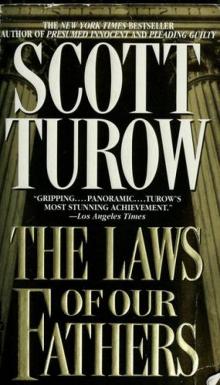 The Laws of Our Fathers
The Laws of Our Fathers Ordinary Heroes
Ordinary Heroes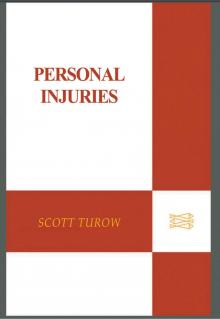 Personal Injuries
Personal Injuries Limitations
Limitations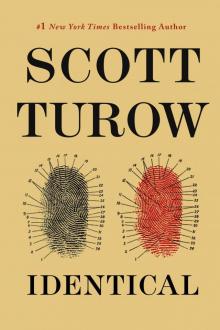 Identical
Identical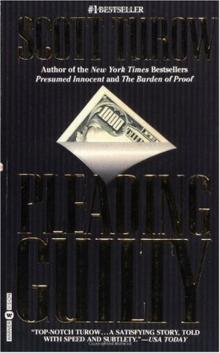 Pleading Guilty
Pleading Guilty Presumed Innocent
Presumed Innocent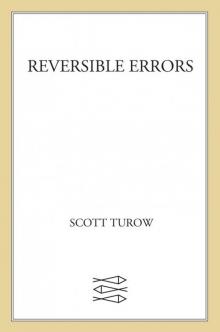 Reversible Errors
Reversible Errors One L: The Turbulent True Story of a First Year at Harvard Law School
One L: The Turbulent True Story of a First Year at Harvard Law School Ultimate Punishment
Ultimate Punishment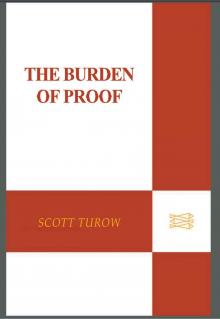 The Burden of Proof
The Burden of Proof Ordinary Heroes (2005)
Ordinary Heroes (2005)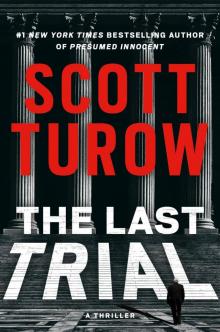 The Last Trial
The Last Trial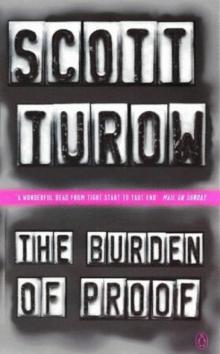 The Burden of Proof kc-2
The Burden of Proof kc-2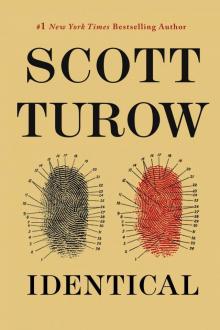 KC09 - Identical
KC09 - Identical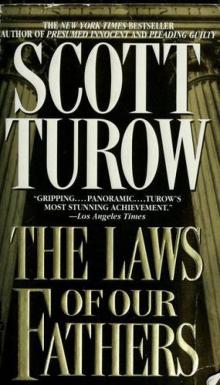 The Laws of our Fathers kc-4
The Laws of our Fathers kc-4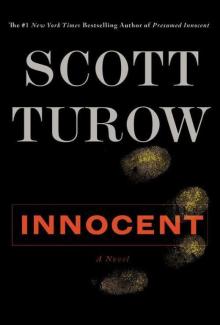 Innocent kc-8
Innocent kc-8 One L
One L Identical kc-9
Identical kc-9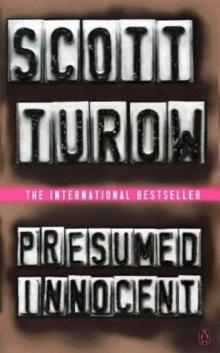 Presumed innocent kc-1
Presumed innocent kc-1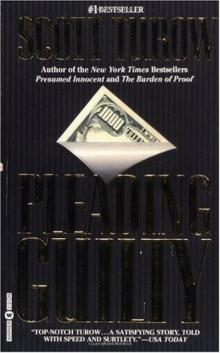 Pleading Guilty kc-3
Pleading Guilty kc-3 One L (1977)
One L (1977)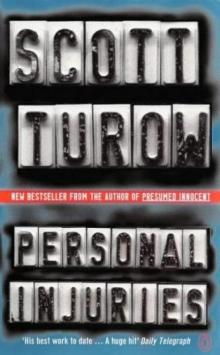 Personal injuries kc-5
Personal injuries kc-5